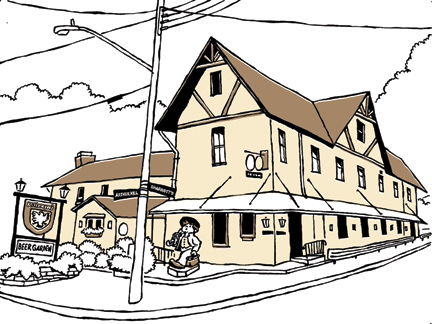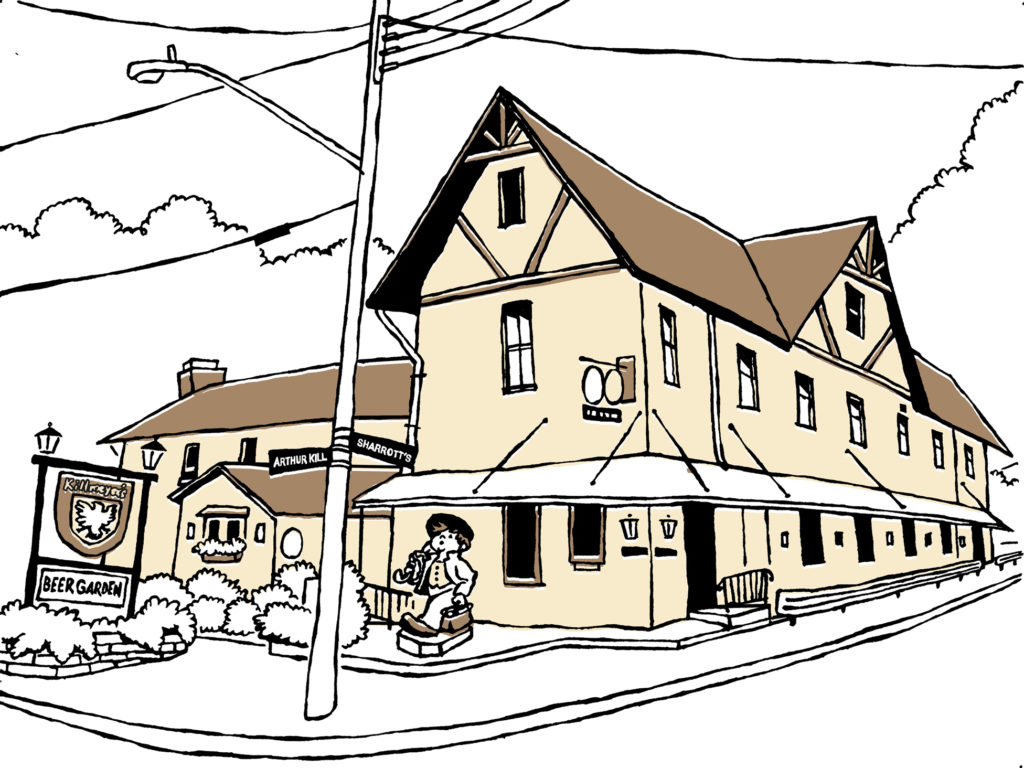Killmeyer’s Old Bavaria Inn is part of a series of tidbits from the chapters of my book Bars, Taverns and Dives New Yorkers Love, published by Rizzoli. You can order it from Powell’s, Amazon, Rizzoli, and Barnes & Noble. Signed prints of all the bars in the book are available here.
You might think when a modern-day place in New York City calls itself “old,” and “Bavarian” right there in its name, that it’s a gimmick. Like a tourist bar trying to be all “old west” by calling itself Jebediah P. Leathersmacker’s Old-Tyme Western Saloon. This is not the case with Killmeyer’s. It’s legitimately German and quite old, having been there since 1859, according to owner Ken Tirado.
Back in the 1800s, the neighborhood—and much of Staten Island—was loaded with German immigrants who made good use of the island’s fresh spring waters for brewing. The heavy clay soil in the southwest was ideal for manufacturing firebricks, and the area blossomed as a German-American brick factory town called Kreischerville, named for brick baron Balthasar Kreischer. During the anti-German blowback following World War I, the neighborhood’s name was changed to the uber-English sounding Charleston.
A Few Killmeyer’s Old Bavaria Inn Details:
• First of all, that giant Hummel figurine. He stands before Killmeyer’s, mid-stride, in an impossible state of perpetual yodel. He’s based on Hummel’s “The Merry Wanderer,” and is indeed the world’s largest Teutonic urchin. He was built in Cologne, Germany in the mid-1970 and made it, all 4,000 pounds of him (1814 kilograms when he left Europe), to the New Jersey import company that then handled Hummel products. Eventually they went bankrupt and approached Tirado. “I guess they’d run out of ideas on what to do with the statue—I assume they tried to sell it first—when I got a phone call asking if I wanted it.” he says. “I had to have it professionally moved, plus I had to have a steel-reinforced platform poured to support it.”
• According to Tirado, the stately cherry-stained mahogany bar was commissioned by the Killmeyer family in 1890 and built by a man named Vogel on the Bowery in Manhattan. It was shipped in pieces by barge across New York Harbor then down Arthur Kill to southwest Staten Island. Once offloaded, the pieces were hauled by horse-drawn wagon to Killmeyer’s, where a Russian-Jewish craftsman assembled the bar you see there today, arguably making Killmeyer’s the oldest bar on Staten Island.
• Killmeyer’s front walkway is paved with bricks made in Balthasar Kreischer’s old “New York Fire-Brick and Staten Island Clay Retort Works” factory down the street back in the 1800s. It was Herr Kreischer who originally sold the land to the Killmeyer family in the 1850s. You’ll see his name on those bricks as you walk into Killmeyer’s today.
Next up:
The Kettle Black of Bay Ridge, Brooklyn: a true local’s local that makes lauded, world-class wings, and another chapter of my book Bars, Taverns and Dives New Yorkers Love, which you can order right here. Limited-edition signed prints of the bars are available here.


